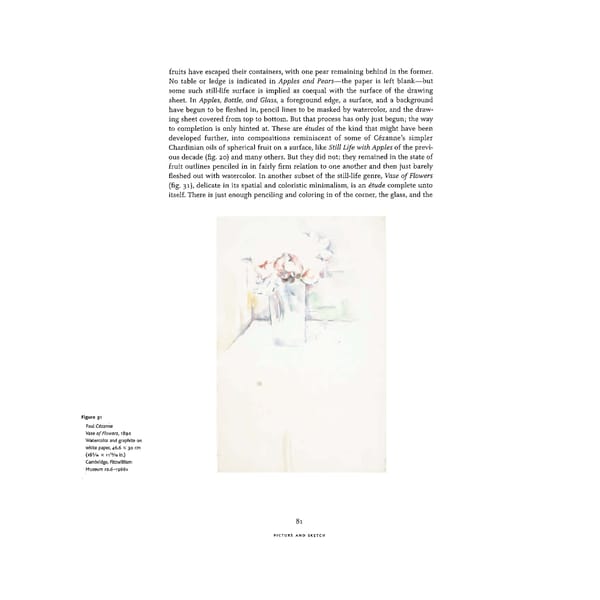fruits have escaped their containers, with one pear remaining behind in the former. No table or ledge is indicated in Apples and Pears—the paper is left blank—but some such still-life surface is implied as coequal with the surface of the drawing sheet. In Apples, Bottle, and Glass, a foreground edge, a surface, and a background have begun to be fleshed in, pencil lines to be masked by watercolor, and the draw- ing sheet covered from top to bottom. But that process has only just begun; the way to completion is only hinted at. These are études of the kind that might have been developed further, into compositions reminiscent of some of Cezanne's simpler Chardinian oils of spherical fruit on a surface, like Still Life with Apples of the previ- ous decade (fig. 20) and many others. But they did not; they remained in the state of fruit outlines penciled in in fairly firm relation to one another and then just barely fleshed out with watercolor. In another subset of the still-life genre, Vase of Flowers (fig. 31), delicate in its spatial and coloristic minimalism, is an étude complete unto itself. There is just enough penciling and coloring in of the corner, the glass, and the Figure 31 Paul Cézanne Vase of Flowers, 1890 Watercolor and graphite on white paper, 46.6 x 30 cm 5 13 (i8 /i6 x ii /iein.) Cambridge, Fitzwilliam Museum po.6-i966v 8l PICTURE AND SKETCH
 Cézanne in the Studio: Still Life in Watercolors Page 95 Page 97
Cézanne in the Studio: Still Life in Watercolors Page 95 Page 97